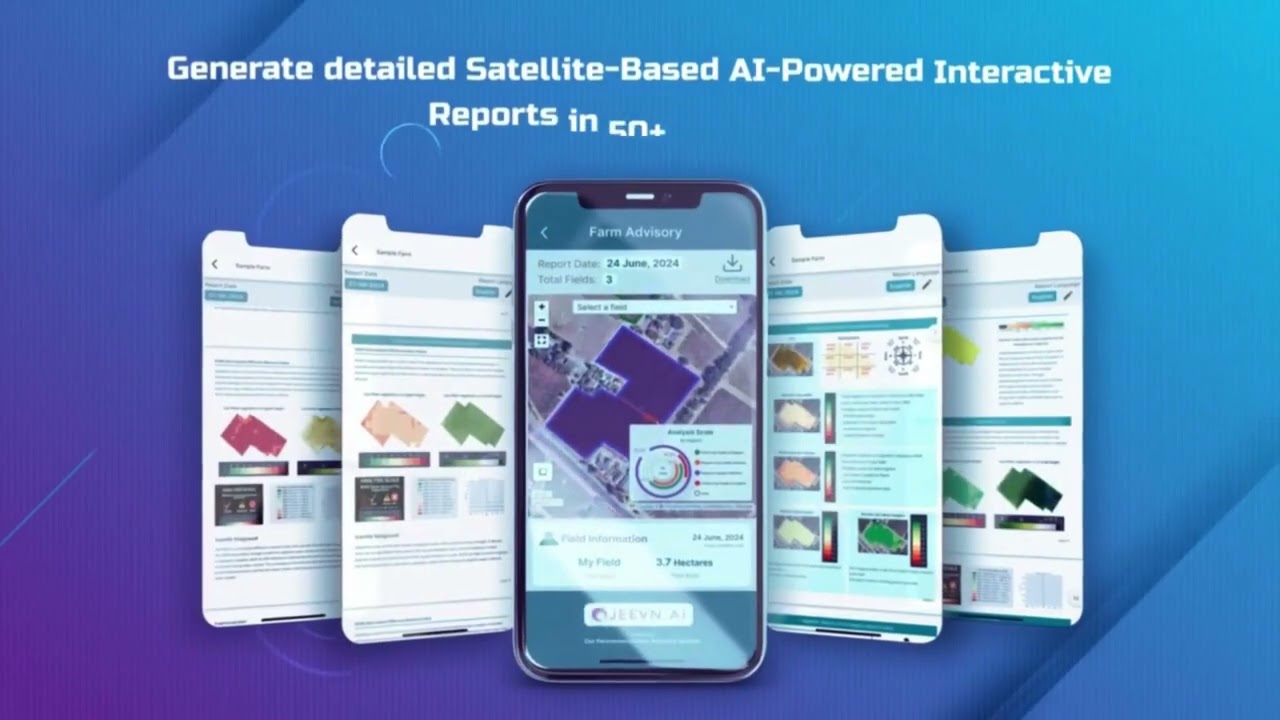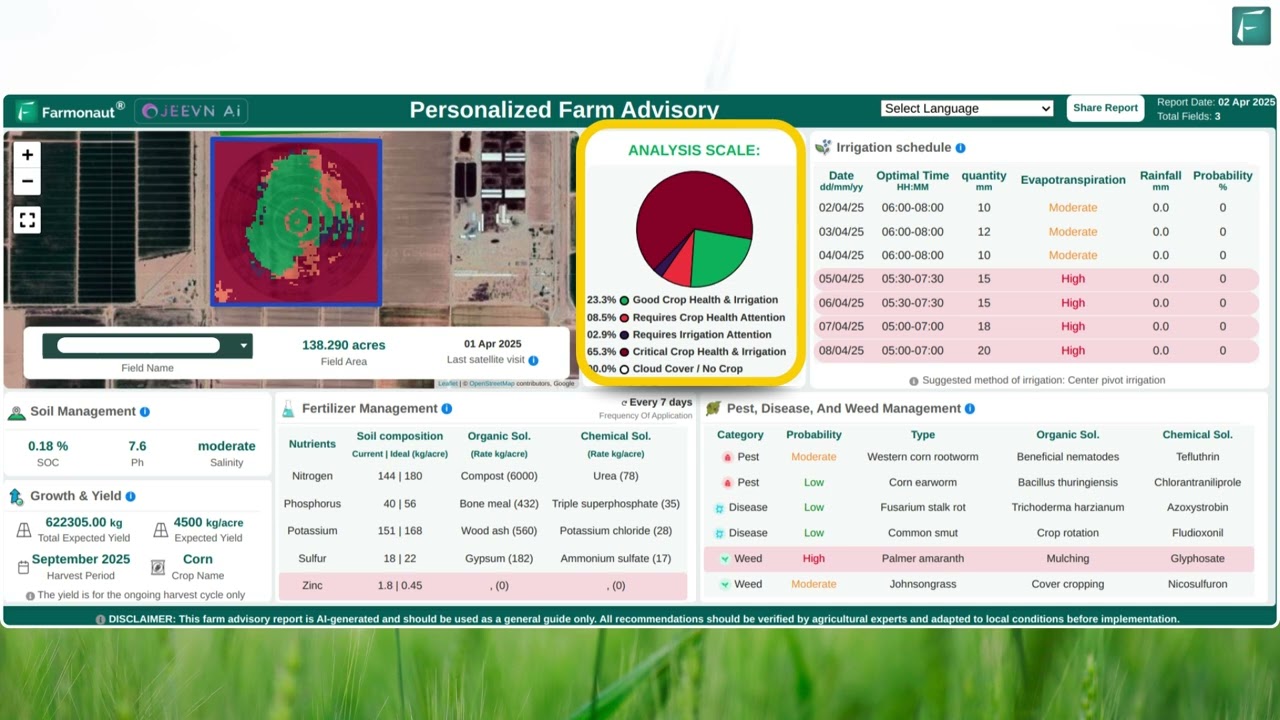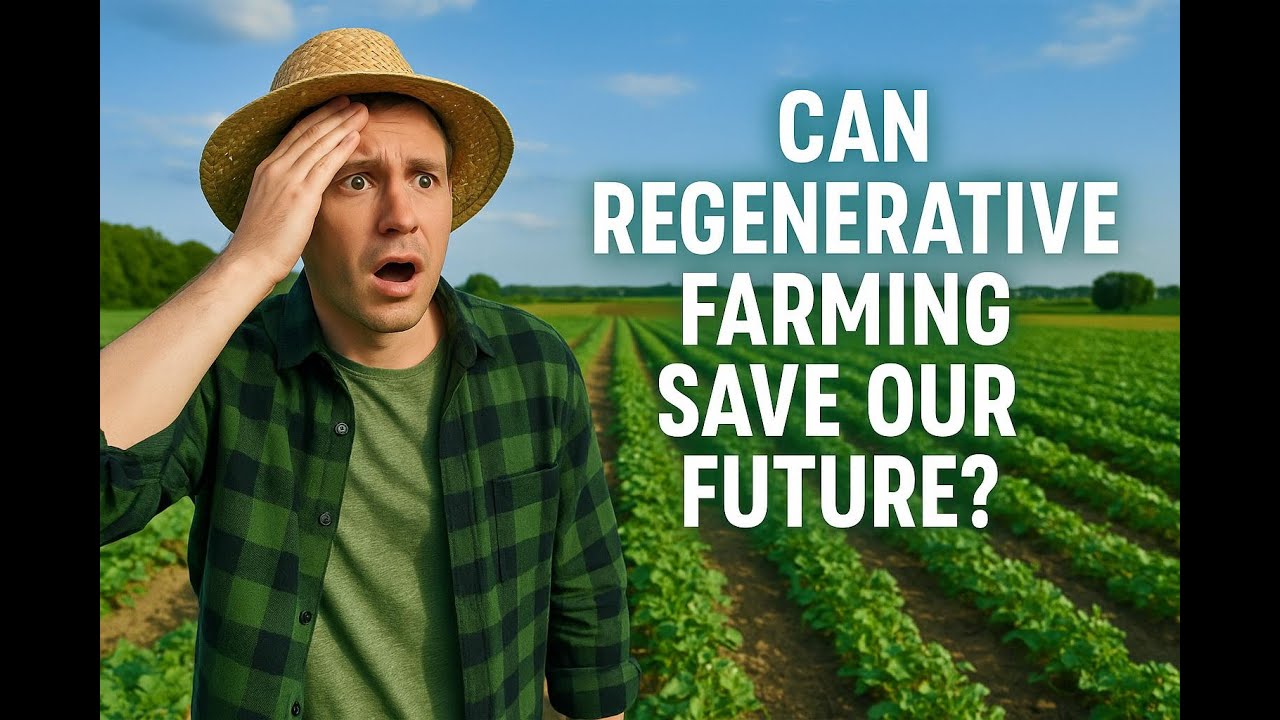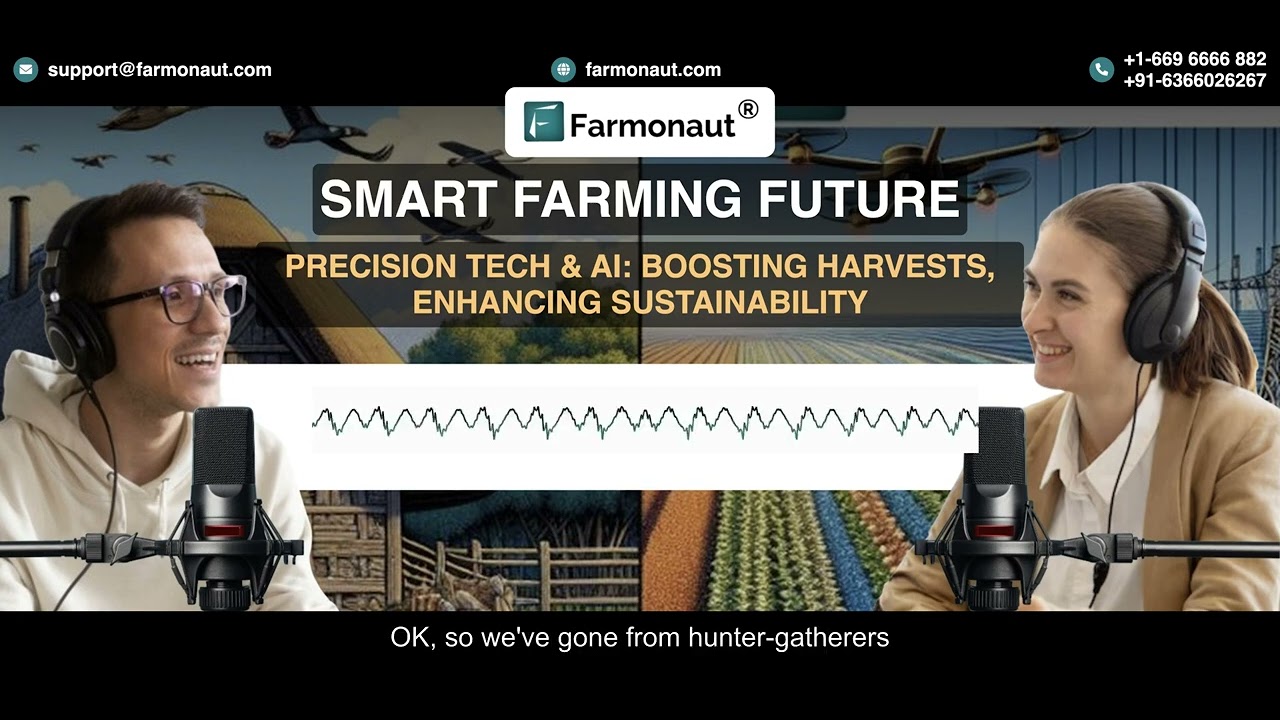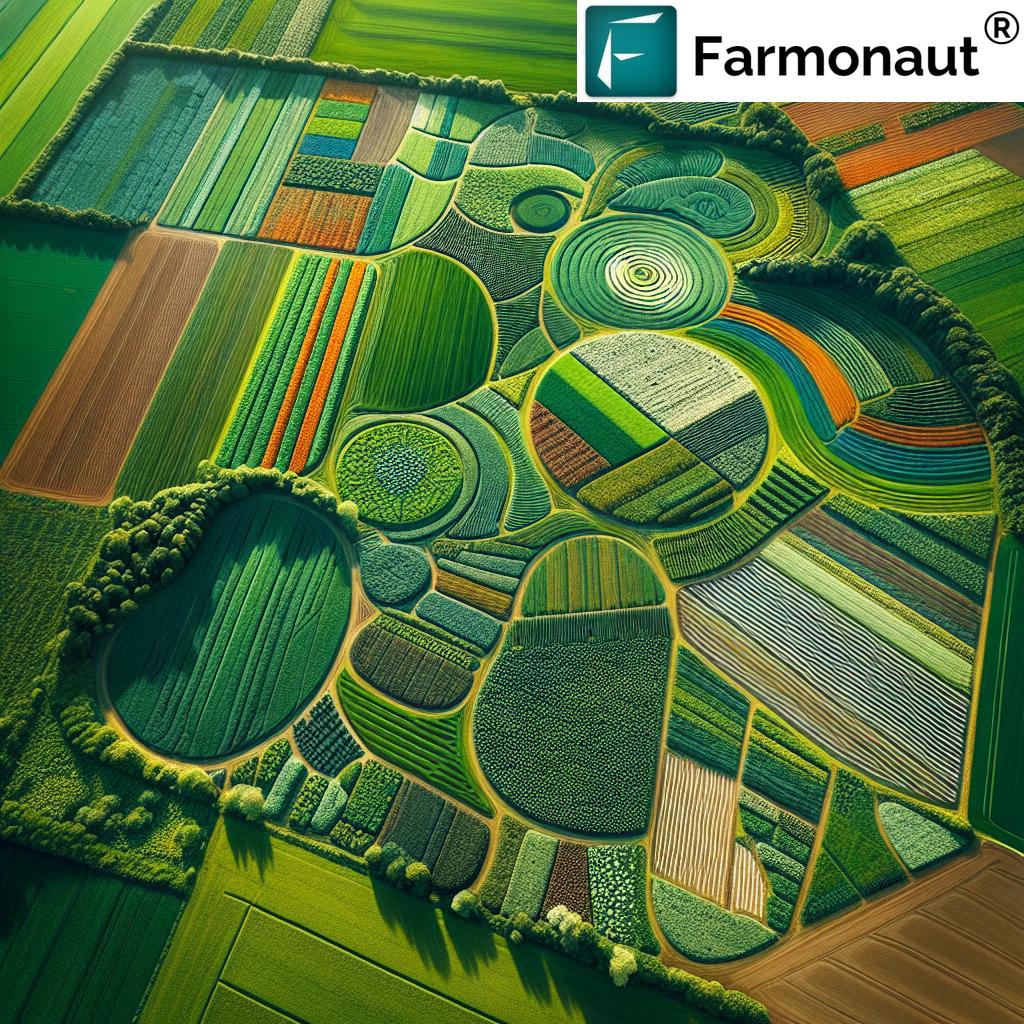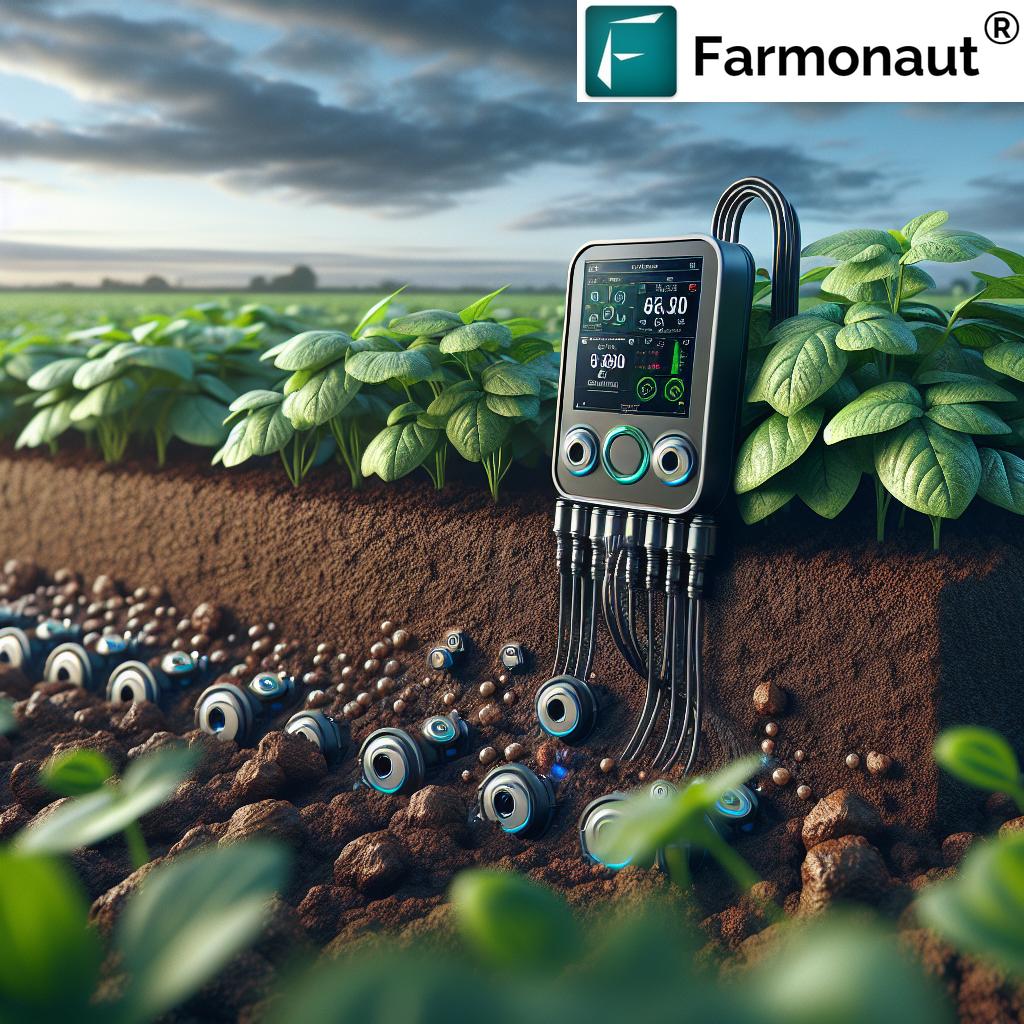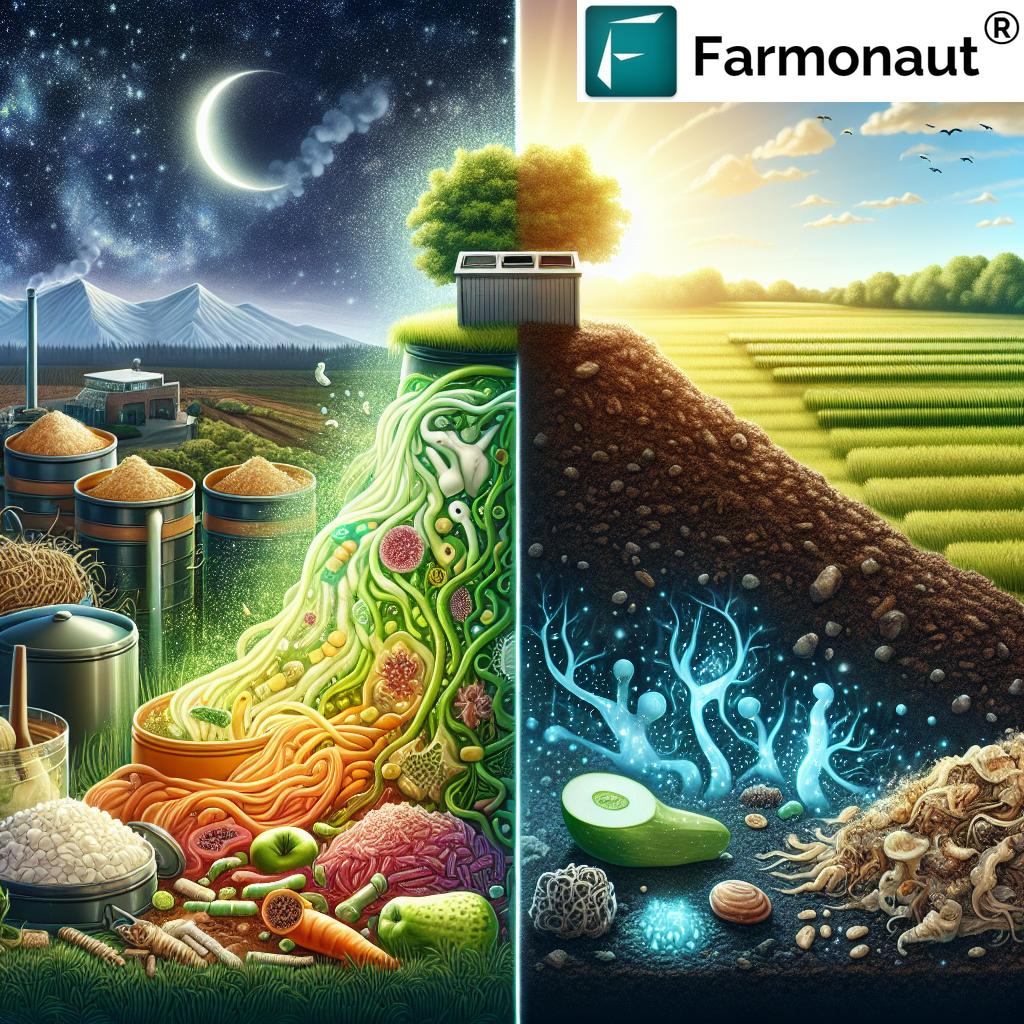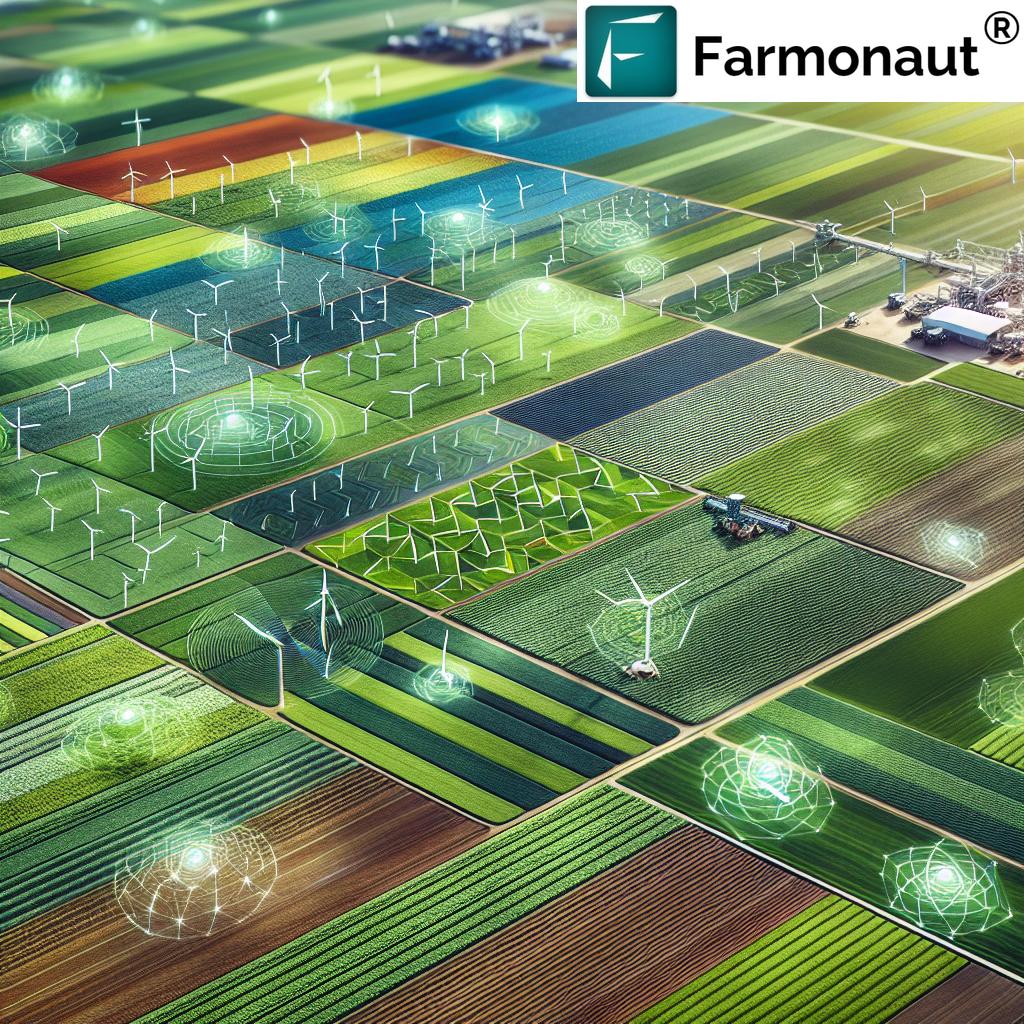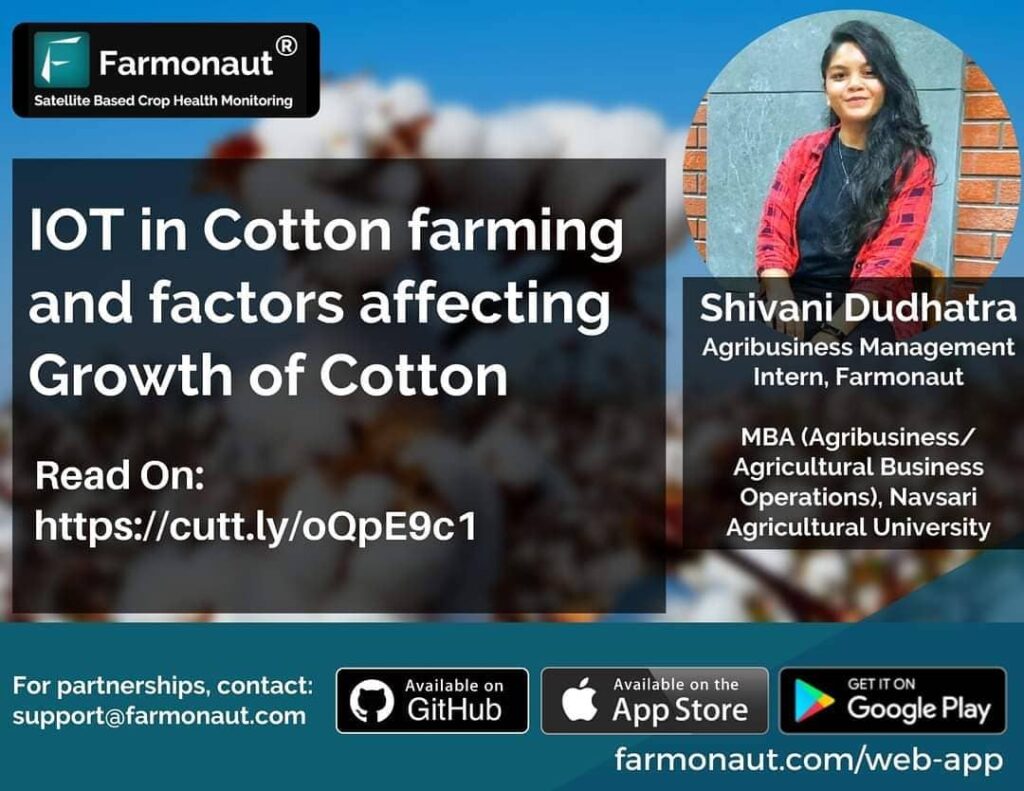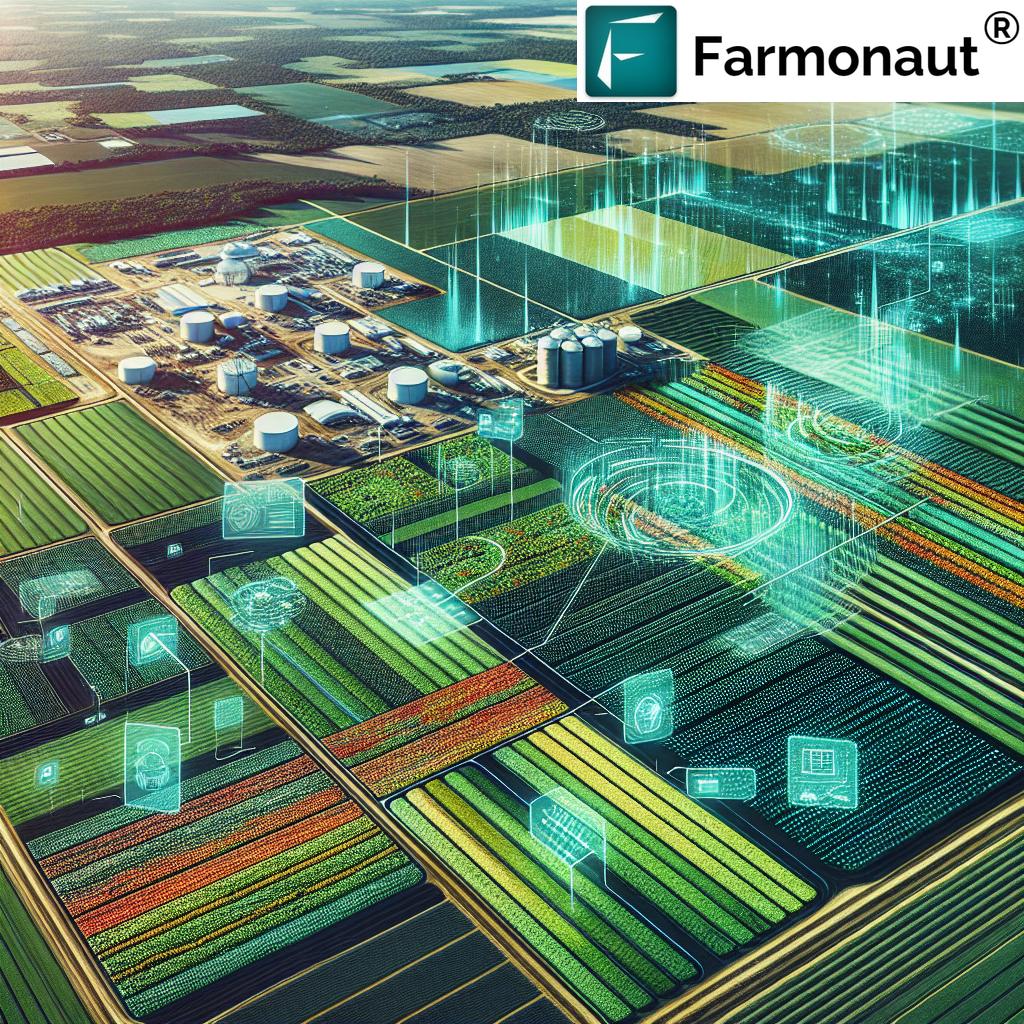Improve Farming: 7 Sustainable Farming Improvements 2025
Table of Contents
- Introduction: Why Improving Farming in 2025 Matters
- 1. Precision Agriculture & Satellite Monitoring
- 2. Improved Farming Methods: Soil Health & Fertility
- 3. Water Management Innovations
- 4. Biotechnological Advances & Crop Breeding
- 5. Digital Tools & Farm Management Platforms
- 6. Sustainable Livestock Integration
- 7. Agroforestry: Integrating Trees into Agriculture
- Comparison Table: Sustainable Farming Improvements (2025)
- Frequently Asked Questions (FAQ)
- Conclusion
Introduction: Why Improving Farming in 2025 Matters
As we move further into 2025, the urgency to improve farming and improve agriculture is clear. The world faces mounting challenges: climate change continues to threaten food security, global populations rise, and agricultural resources are under increased strain. To meet these demands, farming improvements are essential—not just to raise productivity, but to foster sustainable, environmental stewardship and long-term resilience.
This blog explores the seven best paths to improve farming in 2025: from the transformative impact of precision agriculture with real-time satellite monitoring, to soil-enhancing improved farming methods, and water-saving management innovations. Read on to discover how modern technology and integration of innovative practices are reshaping the future of agriculture—delivering higher yields, more resilient systems, and better environmental outcomes.
1. Precision Agriculture & Satellite Monitoring: Driving Sustainable Farming Improvements in 2025
Precision agriculture stands at the forefront of efforts to improve farming and improve agriculture methods for 2025. Utilizing advanced technologies such as GPS, drones, and especially satellite imagery, modern farming improvements enable unprecedented optimization at the field level. Farmers today can monitor crop health, soil conditions, and moisture levels in real time—empowering them to apply water, fertilizers, and pesticides with pinpoint efficiency.
How Satellite-Based Monitoring Works
- Multispectral Imagery: Satellites capture multispectral images of crops and soils, revealing insights invisible to the naked eye.
- NDVI & Vegetation Health: The Normalized Difference Vegetation Index (NDVI) gauges plant vigor and stress—essential for early detection of disease, drought, or nutrient deficiencies.
- Soil Moisture Analysis: Automated monitoring systems assess moisture levels, helping optimize irrigation scheduling and water use.
- Decision Support Systems (DSS): Real-time data feeds into AI-based advisory tools, guiding management of inputs for increased yields and sustainable resource allocation.
Platforms such as Farmonaut integrate satellite-based crop health monitoring and AI-driven insights directly into a mobile and browser-based farm management app. This democratizes affordable precision agriculture for both smallholders and large agribusinesses—no need for expensive on-farm sensors or equipment.
Key Environmental and Economic Benefits
- Boosts Yields & Productivity: Targeted management enhances crop growth and output, underpinned by real-time data.
- Reduces Resource Waste: Precisely tuned inputs lower unnecessary use of water, fertilizer, and pesticides.
- Promotes Sustainability: Effective resource allocation diminishes environmental impact, supporting lower carbon footprints.
- Empowers Resilience: Data-driven management makes farming systems more adaptable to climate change and weather variability.
Example: Farmonaut’s Precision Tools
By harnessing multispectral satellite data, AI-advisory (Jeevn AI), and blockchain-based traceability (see Farmonaut Traceability), we equip farmers globally with actionable insights for every growing season.
This is one of the key improvements transforming agriculture in 2025, helping to improve farming efficiency, reduce environmental impact, and ensure food security.
2. Improved Farming Methods: Soil Health & Fertility for Sustainable Yields
A healthy soil is the foundation of improved agriculture, supporting resilient crop production and nutrient cycling. Improved farming practices, such as cover cropping, crop rotation, and reduced tillage, are essential for safeguarding soil structure and increasing its fertility—while reducing erosion and limiting nutrient leaching.
We see that building soil health is critical for climate adaptation: soils rich in organic matter store moisture better, buffer crops from drought, and support beneficial microbial activity. The adoption of these techniques globally is growing rapidly in 2025.
Soil-Boosting Techniques for 2025
- Crop Rotation: Rotating crops prevents pest and disease build-up, disrupts weed cycles, and balances soil nutrient depletion.
- Cover Cropping: Using plants like clover or legumes during off-season, cover crops prevent erosion, fix nitrogen, and increase soil organic matter.
- Reduced Tillage: Limiting soil disturbance preserves structure, boosts moisture retention, and nurtures microbial diversity.
- Organic Amendments & Biofertilizers: Incorporating manure, compost, and natural biofertilizers builds fertility without relying solely on synthetics.
Farmonaut analyzes satellite data to detect soil health indicators—identifying at-risk areas where intervention can improve farming outcomes, support sustainable development, and underpin stable harvests.
Examples of Impact
- Cover cropping can increase organic matter by 20–30% in five years, leading to improved yields and climate resilience.
- Biofertilizers promote microbial activity, enhance nutrient uptake, and reduce the need for chemical inputs.
Practices like these not only yield environmental benefits but also reduce operational costs, enabling farmers to sustain production in the face of modern challenges.
3. Water Management Innovations: Optimizing Usage and Building Resilience
Water is a critical resource for agriculture, and water management is more important than ever as scarcity and climate variability increasingly affect farming regions. Innovative solutions in irrigation, moisture monitoring, and efficient technologies are helping farmers optimize water usage, improve farming resilience, and achieve sustainable outcomes in 2025.
Innovations Transforming Water Management
- Drip Irrigation: Precisely delivers water to plant roots, ensuring minimal waste and significantly reducing consumption.
- Automated Moisture Sensors: Real-time monitoring adjusts irrigation cycles to match exact crop needs, responding to weather and soil moisture data.
- Rainwater Harvesting: Systems collect and store rainfall for later use, supporting farms during dry periods and mitigating risk.
- Water-Efficient Crop Varieties: Adopting drought-tolerant and short-duration crops enables farmers to maximize yields under challenging conditions.
Tools like Farmonaut’s real-time satellite moisture tracking empower users to time irrigation for maximum effectiveness, reducing both overuse and yield penalties from drought. These farming improvements are essential for long-term food production and sustainable water stewardship.
Explore precision resource management features for your operation:
Farmonaut Fleet & Resource Management
Water Management is Key for:
- Adapting to climate change and erratic rainfall
- Reducing environmental impact from over-extraction of aquifers
- Boosting drought resilience and reliable food security
4. Biotechnological Advances & Improved Crop Breeding in Agriculture
Biotechnology has become a cornerstone of improved farming practices, unlocking new opportunities to develop improved crop varieties that are tailored for resilience, nutrient content, and sustainability. Gene-editing techniques, like CRISPR, and advanced crop breeding are allowing us to improve agricultural productivity while addressing threats from pests, diseases, and variable environmental conditions.
How Biotechnology Drives Improved Farming
- Disease and Pest Resistance: Gene-editing creates crops that stand up to biological threats, lowering crop losses and reducing reliance on pesticides.
- Climate Resilience: Breeding for tolerance to drought, heat, or salinity supports food security as climate change continues.
- Enhanced Nutrition: Crops can be developed for improved vitamins, minerals, and protein—combating malnutrition and increasing food value.
- Shorter Maturation Times: Fast-growing crops can allow multiple harvests annually, increasing productivity per hectare.
By integrating biotechnology with precision monitoring, farmers gain the confidence to adopt improved farming methods—knowing their fields are equipped to handle modern stresses and deliver high, stable yields.
Traceability for Biotech Crops
With modern advances, traceability is vital. Farmonaut’s blockchain-backed traceability system ensures every stage of biotech crop production is transparent and verified, safeguarding both growers and consumers.
5. Digital Tools & Farm Management Platforms: Empowering Farmers via Technology
The digital revolution is accelerating improved farming practices in 2025. Mobile farm management apps, cloud-based software, and integrated AI advisory systems deliver data, advice, and actionable insights to farmers directly—bridging knowledge gaps and enhancing operational efficiency.
Some platforms, such as Farmonaut, combine satellite imagery, AI, and decision support tools inside user-friendly web and mobile applications. These tools give both individual farmers and large agribusinesses real-time data to optimize inputs, manage risk, and maximize productivity.
Benefits of Farm Management Apps & APIs
- Real-Time Monitoring: View live data on crop health, soil moisture, and weather.
- Automated Alerts: Receive warnings about disease risk or climate extremes.
- Decision Support: Get AI-driven advisory (like Jeevn AI in the Farmonaut platform) for fertilization, irrigation, and harvest planning.
- Resource & Fleet Management: Track farm machinery, logistics, and costs with comprehensive tools—see Fleet & Resource Management.
- Traceability & Compliance: Meet certification and quality proof requirements with digital records.
-
API Access: Advanced users and agri-businesses can integrate Farmonaut’s satellite and weather API into their own tools:
Farmonaut API |
API Developer Docs
Use Case Benefits
- Smallholder access: Affordable subscriptions enable even small farms to improve farming with cutting-edge insights.
- Government & NGOs: Enable monitoring, subsidy planning, and large-scale sustainable initiatives.
- Financial Institutions: Satellite-derived verification streamlines crop loan and insurance (see Farmonaut’s Crop Loans & Insurance support).
Try the Farmonaut Platform
6. Sustainable Livestock Integration & Improved Management Systems
Sustainable livestock management is a key improvement that enhances both productivity and stewardship across agricultural systems. Thoughtfully integrating livestock into cropping systems and adopting rotational grazing, optimized feeding, and waste recycling helps improve farming outcomes far beyond meat or milk production.
Core Practices for 2025
- Rotational Grazing: Livestock are moved between pastures, allowing recovery and reducing pressure on soils—improving soil health and carbon sequestration.
- Improved Feed Efficiency: Higher-quality or locally produced feeds reduce methane emissions and increase weight gain, supporting resource-efficient production.
- Waste Recycling: Livestock manure is composted and returned to crop fields, boosting nutrient cycling and soil fertility.
- Crop-Livestock Integration: Combining crops and animals on the same land improves land-use efficiency, resilience, and diversified farmer income.
Tools like Farmonaut’s satellite health monitoring allow tracking of grazing impacts, pasture regrowth, and even carbon-saving improvements across integrated crop-livestock systems.
Discover how API data and remote sensing can enable smarter livestock and land-use decisions:
Farmonaut Satellite API
7. Agroforestry: Integrating Trees into Agriculture for Sustainability
Agroforestry—the practice of including trees and shrubs within farming systems—is rapidly gaining recognition for its ability to deliver multiple environmental benefits alongside productive agriculture. By 2025, improved farming methods frequently include tree planting and maintenance as a core strategy for building resilience and sustainable development.
Farmers benefit not only from additional income (timber, fruits, nuts) but also from soil health improvements, carbon sequestration, water regulation, and increased biodiversity. Trees can also offer shade, wind protection, and shelter for livestock or sensitive crops.
Key Advantages of Agroforestry
- Improved Soil Fertility: Deep-rooted trees draw up minerals and cycle nutrients back into the soil via leaf litter.
- Water Regulation: Tree cover reduces runoff and erosion, while retaining moisture and supporting year-round water availability.
- Carbon Sequestration: Agroforestry systems capture and store significant quantities of atmospheric carbon.
- Biodiversity: Trees provide habitats for insects, birds, and other beneficial organisms.
- Additional Income Streams: Farmers can harvest nuts, fruit, or timber alongside regular crops.
Get tailored agroforestry and plantation advice with satellite-based tools:
Farmonaut Crop, Plantation & Forest Advisory
Comparison Table of Sustainable Farming Improvements (2025)
How to Interpret & Choose
For maximum yield and resource efficiency, combining several of these improvements—such as satellite-guided irrigation, cover cropping, and biofertilizer adoption—delivers holistic gains across yield, soil, and environmental sustainability. Precision technology magnifies results by targeting farming improvements exactly when and where needed.
Frequently Asked Questions (FAQ)
What is the easiest way to start with precision agriculture?
Modern apps and platforms, like Farmonaut, allow farmers to access real-time satellite data and actionable advisory without up-front investment in hardware. It’s as simple as signing up and setting your farm boundaries on your phone or computer.
Can improved farming methods actually increase my profitability?
Yes. Most improved practices such as precision irrigation, cover cropping, crop rotation, and use of biofertilizers not only raise yields but also cut resource wastage, saving money and boosting long-term profitability.
How do digital farm management tools help with climate change?
They help you adapt and respond rapidly—whether by tracking rain forecast, alerting to crop stress, or optimizing resource use for efficiency. This reduces losses and builds resilience.
Does Farmonaut offer services for small farmers and large agribusinesses?
Yes. With flexible subscriptions and modular features, we empower users of all sizes: from single farmers accessing crop health insights via mobile, to vast agribusinesses managing plantations, logistics, and compliance.
Can these farming improvements adapt to different climates and conditions?
Absolutely. Practices and technologies such as satellite monitoring, digital advisory, agroforestry, and sustainable livestock integration are customizable to local conditions and farm types—making them effective worldwide.
Is blockchain-based traceability really useful for farming?
Yes, especially as food markets demand proof of origin, safety, and sustainability. Tools like Farmonaut’s Traceability ensure the crops, fibers, or livestock products are easily tracked and verified across the supply chain.
How can I explore Farmonaut’s platform?
Start with the free demo via the Farmonaut Web App, or download for Android or iOS devices.
Conclusion: The Future of Improved Farming Practices in 2025 and Beyond
The agricultural landscape of 2025 exemplifies a dynamic fusion of sustainable practices, advanced technology, and environmental stewardship—all essential to improve farming and food security in a changing world. By prioritizing precision agriculture, robust soil management, efficient water use, biotech-powered crop breeding, smart digital tools, sustainable livestock systems, and agroforestry, farmers are creating resilient, productive, and eco-friendly operations.
The integration of satellite-based technologies, AI-driven decision support, and data-driven traceability is not just transforming agriculture, but also offering new pathways to economic growth and climate resilience. At Farmonaut, we are committed to making these improved farming tools accessible, reliable, and actionable for every farmer and agribusiness—empowering the future of sustainable food production for all.
Now is the time to adopt improved farming methods and lead the way towards a food-secure, climate-smart, and sustainable future.
Get started with the tools that power the next green revolution.





